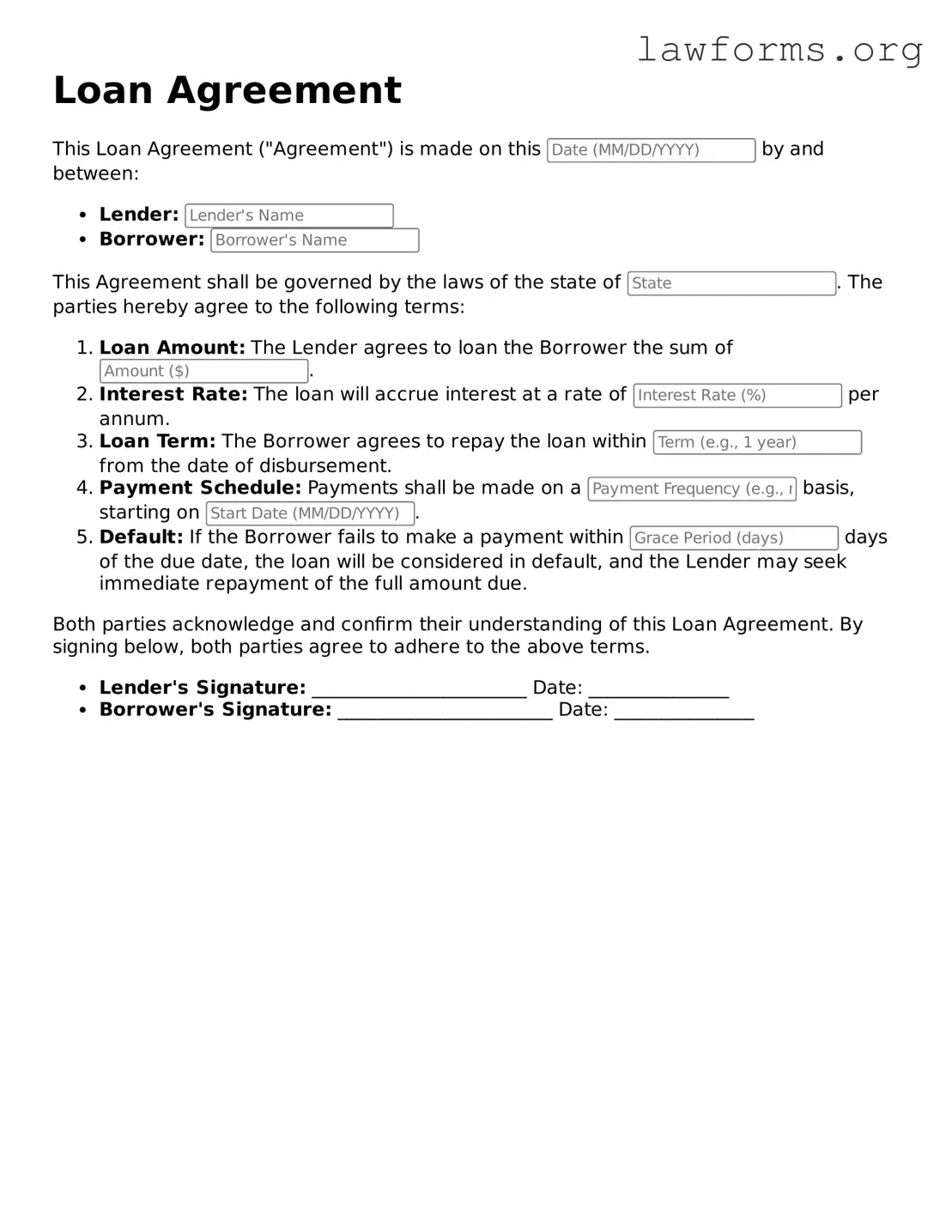Valid Loan Agreement Form
A Loan Agreement form is a legally binding document that outlines the terms and conditions between a lender and a borrower. It details the amount borrowed, repayment schedule, interest rates, and any collateral involved. Understanding this form is essential for both parties to ensure clarity and protect their interests.
To get started on your Loan Agreement, please fill out the form by clicking the button below.
Customize Document Online
